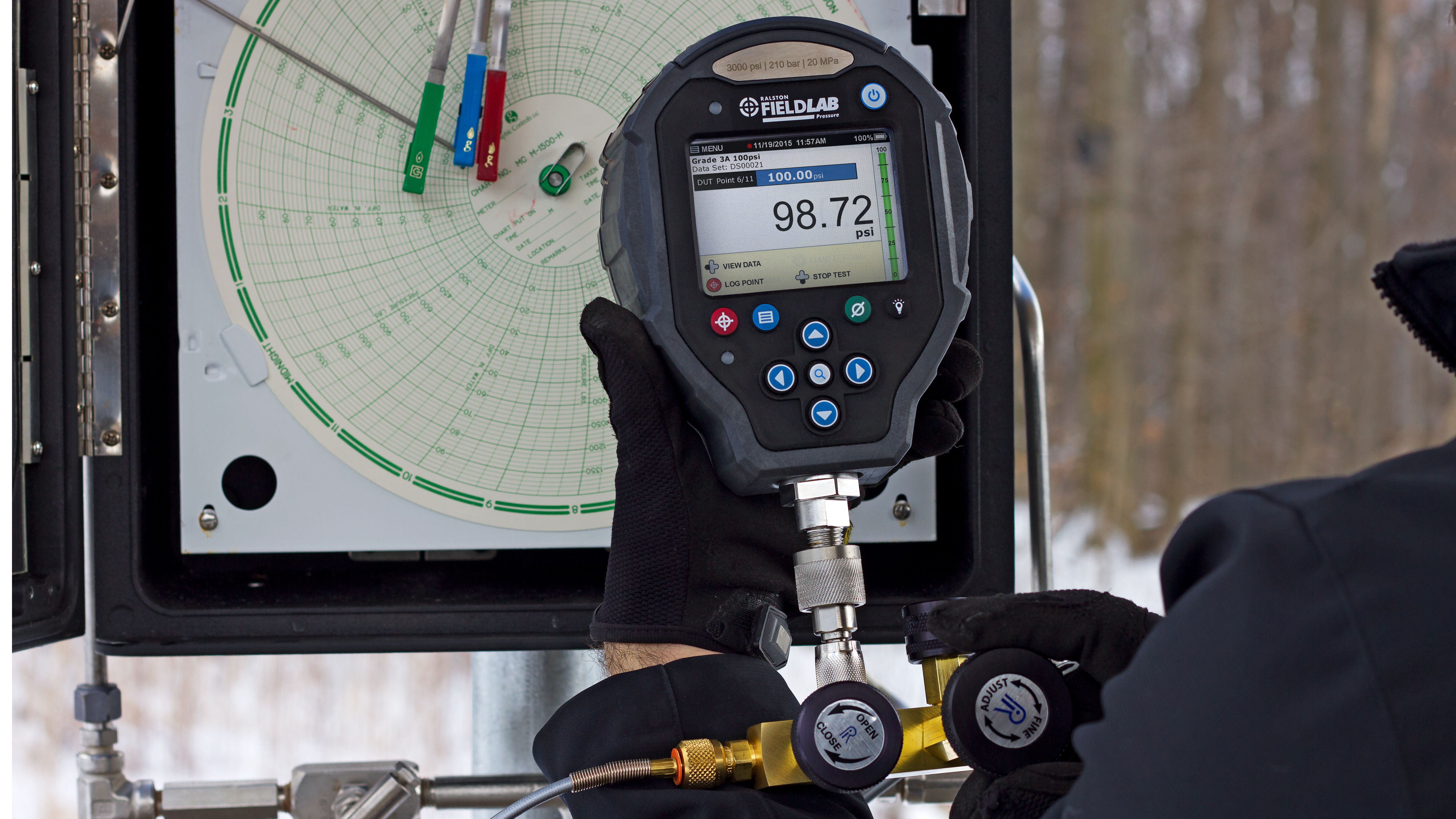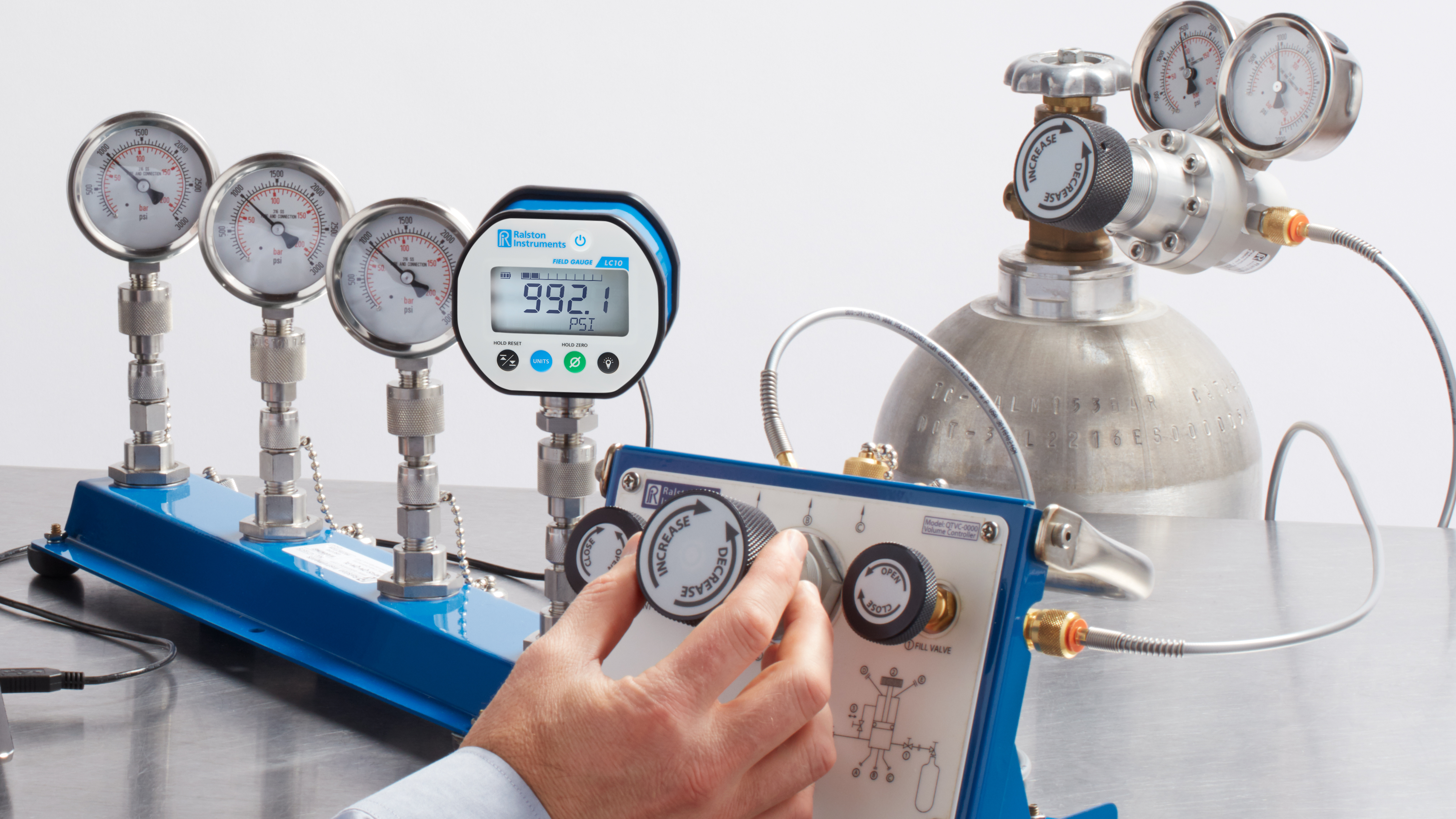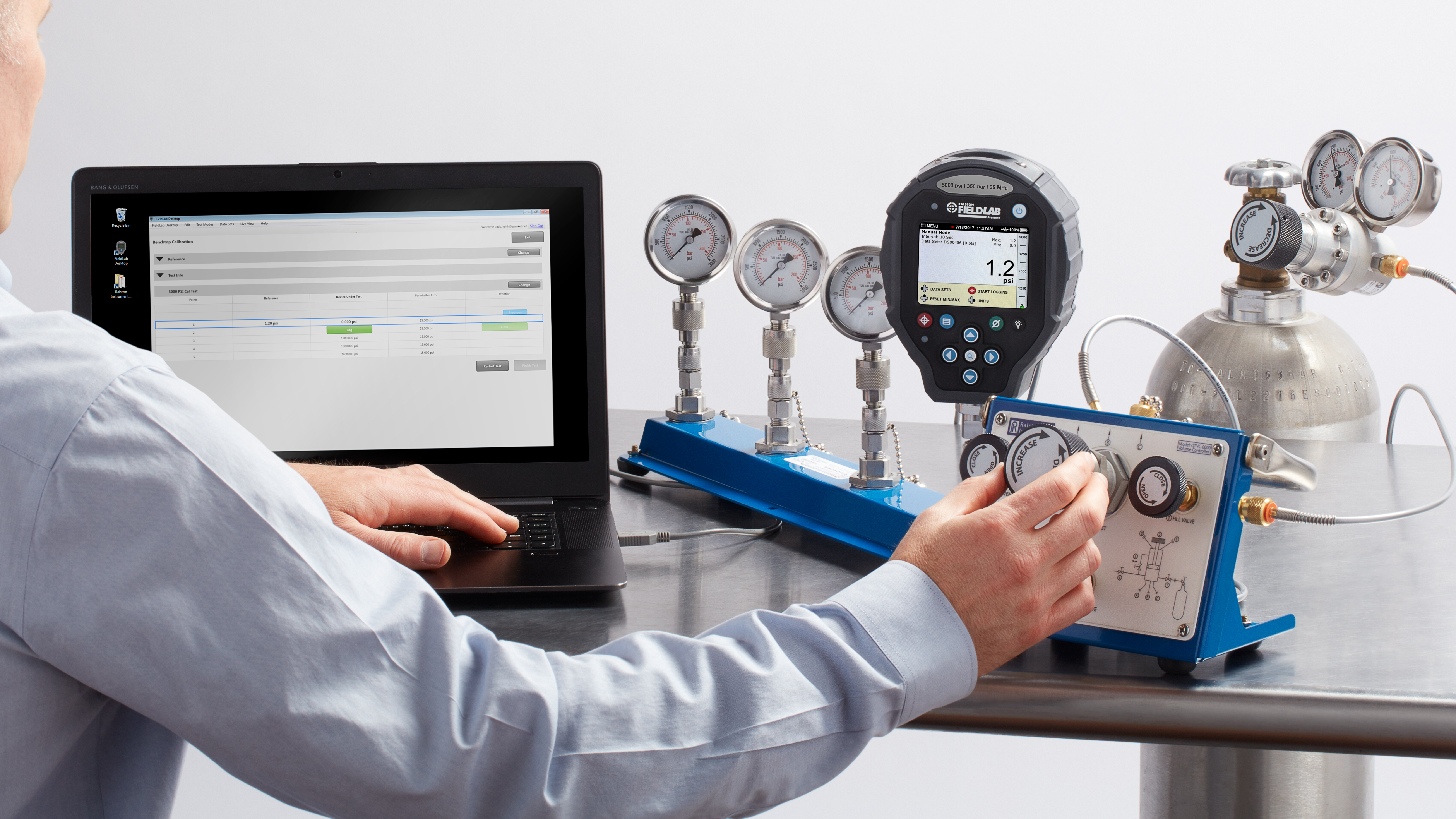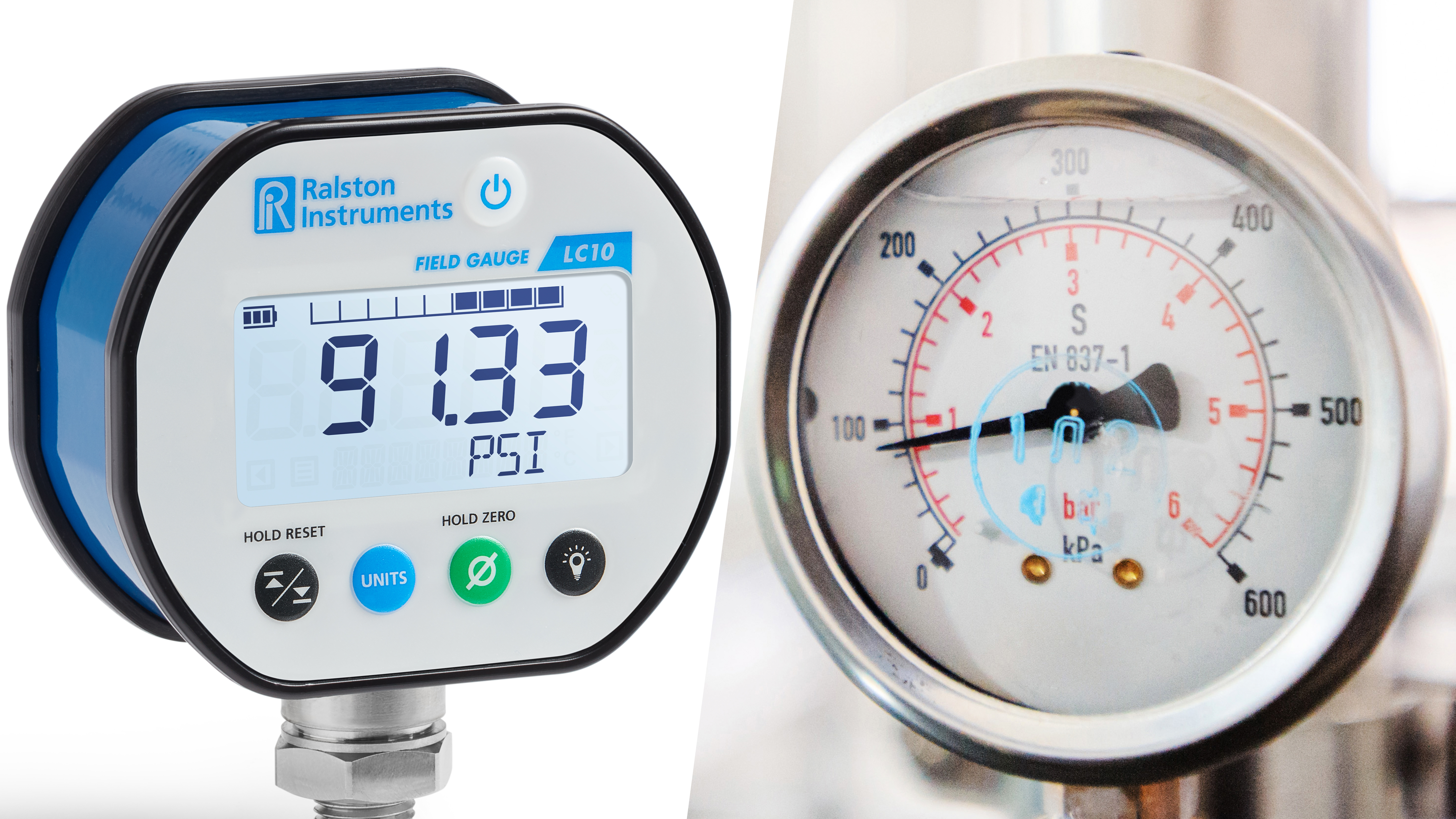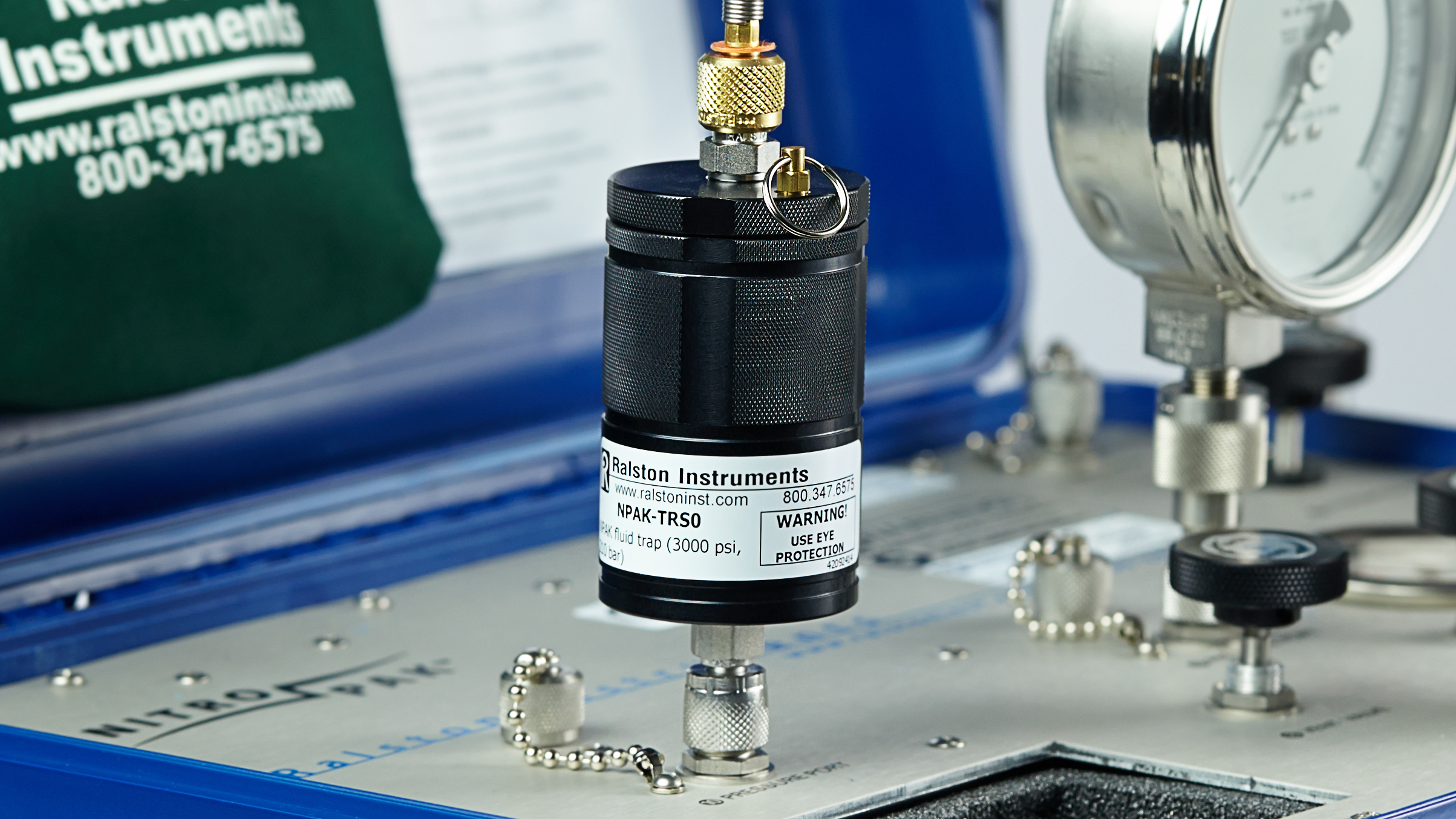The Challenge: Calibrating Chart Recorders on a Gas Pipeline
Calibrating chart recorders on a gas pipeline is a pretty common scenario in the oil and gas industry. Hydraulic fluid is a common way to do it, but it’s not always the best option - especially in the middle of winter. Consider the following:
- Contamination: Any time you’re using a liquid to calibrate a gas pipeline, there may be some residual fluid left over that that could create a false differential pressure.
- Potential Damage to the Chart Recorder: In cold weather, this residual fluid in the sensing element could freeze, which would damage the chart recorder.
- Pressure Stability: Hydraulic fluid is less stable because it is incompressible and cannot expand to accommodate any fluctuations in volume.
A Better Alternative: Calibrating with Nitrogen or Other Compressed Gas
Compressed nitrogen eliminates the risk of residual fluid contamination and will not freeze, so you never have to worry about damaging the sensing element in the chart recorder. And gas is far more stable. Because it’s highly compressed, it will expand to compensate for any volume change. Hydraulic fluid is an incompressible fluid, so even a small change in volume due to a leak or temperature change can produce a large difference in pressure. Compressed gas also provides better control of pressure than hydraulic fluid - especially when using one of our handy calibration manifolds.
The Right Tool for the Task: The Ralston Calibration Manifold
A calibration manifold is a hand-held pressure controller that lets you fine-tune pressure directly at the source of your DUT, so you don’t have to fumble around with a "christmas tree" of connections or make adjustments with a pressure regulator and needle valve. When calibrating chart recorders on a gas pipeline, you just connect the high side of the chart recorders on one end of the manifold, a nitrogen bottle on the other, and a pressure reference gauge to the middle pressure port. Then use the fine-adjust piston and fill and vent valves to reach the precise test points required. The design is simple and intuitive and you eliminate the concerns that arise when using hydraulic fluid.
If you’re involved in static calibration of chart recorders and pressure transmitters and you’ve ever been frustrated by the limitations of hydraulic fluid, it might be time to switch to compressed gas - especially if you have the calibration manifold in your toolbox. They’re available in solid brass or stainless steel and all calibration manifolds come with our Quick-test™ low-volume hoses and quick-connect adapters so setup is easy, you don’t waste a lot of nitrogen, and you never need to use a tool or thread tape. There’s nothing else like it out there in the market.
